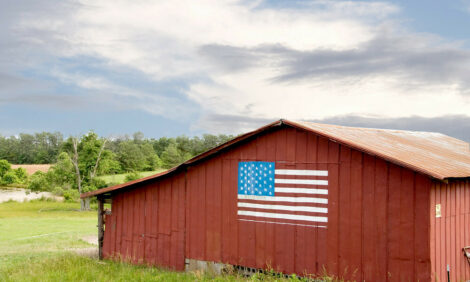



UW–Madison working to protect Wisconsin poultry from avian flu
Researchers closely track migrating wild birdsKeith Poulsen, director of the Wisconsin Veterinary Diagnostic Laboratory (WVDL), with a team of diagnostic scientists led by Ailam Lim, had been closely tracking the ongoing spread of highly pathogenic avian influenza as migrating wild birds were spreading it across the country this winter and spring, according to University of Wisconsin News.
So, his team was prepared when they recently identified Wisconsin’s first known case of the virus, from a commercial chicken producer in Jefferson County.
Now, as the US Department of Agriculture (USDA) and Wisconsin’s Department of Agriculture, Trade and Consumer Protection establish zones of control around infected flocks, the WVDL is prepared to assist with a surge of testing that will help prevent the spread of the virus as birds and eggs are moved around the state.
Although avian influenza viruses can infect humans — typically those who work closely with infected birds — there has been no documented spread to people in the US of the Eurasian H5N1 strain currently circulating. However, the outbreak will likely lead to the culling of millions of birds across the country and commensurate hardships for the poultry industry. The price of eggs, and poultry derived meat products, will also likely rise.
“Working with state and federal partners, we have been really good at controlling the virus by finding it quickly and establishing these control zones,” said Poulsen.
The outbreak is the first since 2015, when the WVDL — part of the National Animal Health Laboratory Network — was crucial in identifying another highly pathogenic avian influenza strain among poultry flocks. Their efforts helped contain the spread in Wisconsin.
A combination of control measures, warmer temperatures (which kill the virus), and the passing of migrating birds significantly reduced the burden of the virus by the early summer of 2015. More than 50 million birds died or were culled nationwide during the 2014-2015 outbreak.
Highly pathogenic avian viruses are highly lethal to farmed poultry but are not as dangerous to the wild birds that typically spread it. Because quick testing is essential to control spread, the WVDL is expanding and upgrading its facility in Barron, Wis., to safely test for highly pathogenic avian influenza. Located near many commercial poultry producers, the Barron facility will allow for immediate testing when time is of the essence.
The $10 million facility upgrade was approved during the 2021-23 biennial budget and is expected to be completed in 2026. The secure Biosafety Level 3 lab will maximize safety for both staff at the testing facility and nearby flocks.
The UW School of Veterinary Medicine is also helping prepare for future outbreaks in poultry. Adel Talaat, a professor of microbiology at the school, is in the process of developing a mosaic vaccine that would offer domestic birds protection from current and future strains of the virus.
“When dealing with animals, especially poultry, it’s important to keep in mind that we would need to be able to vaccinate an entire flock,” Talaat says. “We also need to think about how to make this technology inexpensive so it will be economically viable.”
In developing the vaccine, Talaat relies on sequence data gathered from many different strains of avian influenza — data made available by testing and surveillance programs like the one in place at the WVDL.
While avian influenza vaccines for poultry are currently available, they are not being used on a large scale because this hinders the ability to conduct surveillance testing, which helps to detect the virus in unvaccinated flocks to limit the spread of the disease.
Though Talaat’s vaccine is not yet available for commercial use, he hopes it will help protect flocks from future outbreaks of avian influenza.










